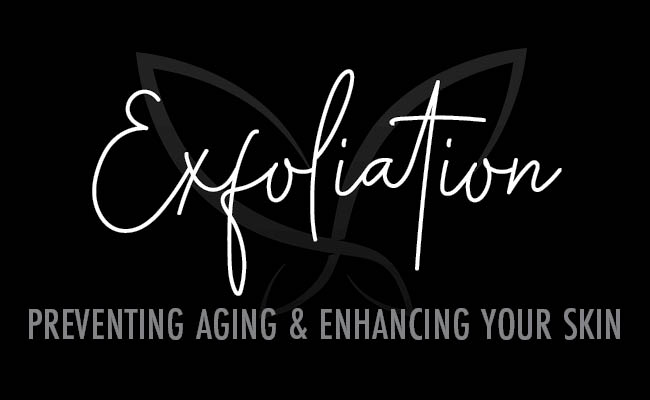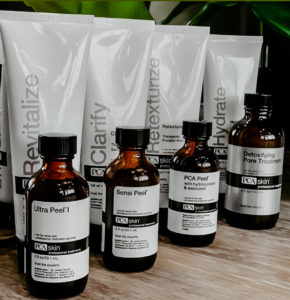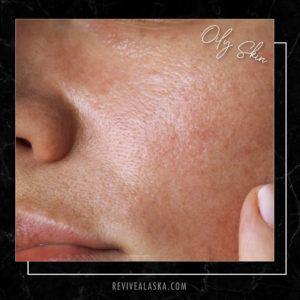
Exfoliation is one of the best ways to improve texture, reduce signs of aging and even skin tone. Signs of aging are best kept under control by taking preventative measures, not corrective measures. Most common aging signs include: sagging/ laxity, loss of elasticity, fine lines, thinning of skin, dryness, deep wrinkles, hyperpigmentation, enlarged pores, and coarse skin.
Regular and effective skin exfoliation has many benefits, but overall can lead to brighter and healthier-looking skin. Develop a skin care routine and keep up with it for best results(no slacking!). If you’re unsure where to start with skin exfoliation, talk to your esthetician about which products and services are best for you.
Types of Skin Exfoliation
There are two types of exfoliation – physical and chemical.
Physical exfoliation is the most commonly known, it uses a hard substance to remove dead skin cells. Examples of physical exfoliation include jojoba beads, pumice or a microdermabrasion type facial.
Chemical exfoliation uses enzymes or acids to remove dead skin cells. The acids or enzymes used are called chemical exfoliants. The most common types are alpha-hydroxy acids (AHA’s) and beta-hydroxy acids(BHA’s). We have been raving so much about chemical peels for a reason – they are extremely effective! Physical exfoliants work on the top layer of skin, while chemical exfoliants penetrate deeper and offer a more even end result.
What does chemical exfoliation do?
Our skin is constantly repairing and renewing itself. This is called cellular turnover. As we age, cell turnover diminishes and reduces the self exfoliation process. This is why it’s important to exfoliate on a consistent schedule, to reveal a new layer of skin! The top six benefits of skin exfoliation include:
- Minimize the appearance of pores
- Improve skin texture
- Reduce fine lines and wrinkles
- Fade age spots
- Fade sun spots
- Enhances product effectiveness
How does exfoliation help enhance product effectiveness? By removing the top layer of dead or damaged skin cells, skin treatments can now penetrate deeper into the skin. Regular exfoliation should be included in everyone’s skin care regimen, so that products can soak in deeper and therefore give maximum results.
What is Chemical Exfoliation?

The word “chemical” can sometimes sound harsh, especially when talking about applying them to your skin. Chemical exfoliants are extremely effective in treating all skin types by safely removing the top layer of dead skin. As opposed to physical exfoliants, chemical exfoliants exfoliate your skin more evenly and safely. Chemical exfoliants are highly advanced formulas and can be done professionally, such as a Chemical Peel, and worked into your weekly routine with topical products. To begin using exfoliant products, ask your esthetician which products are right for you.
- AHA’s. AHA’s are very common in light chemical peel.s AHA’s are an acid that is derived from natural resources, such as fruit or sugar. The two most popular AHA products are glycolic acid and lactic acid.
- BHA’s. BHA is also called salicylic acid, it comes from the same source as aspirin. Salicylic acid is widely known for its healing properties and is a great exfoliant for acne prone skin.
- Enzymes. Enzyme based chemical exfoliants are more gentle and are used for those with sensitive skin. Enzymes come from natural sources, mostly fruits, and work in to your skin at a slower yet effective pace.
The End Results
Exfoliation is essential to smooth and youthful skin. If you are having issues with your makeup not applying evenly, or your skin care products are not treating your condition your skin might have a build up of dead or damaged skin cells. Schedule a free 15 minute skin consultation to see which facial, peel or products are right for you.
Correct Your Skin Concerns..




